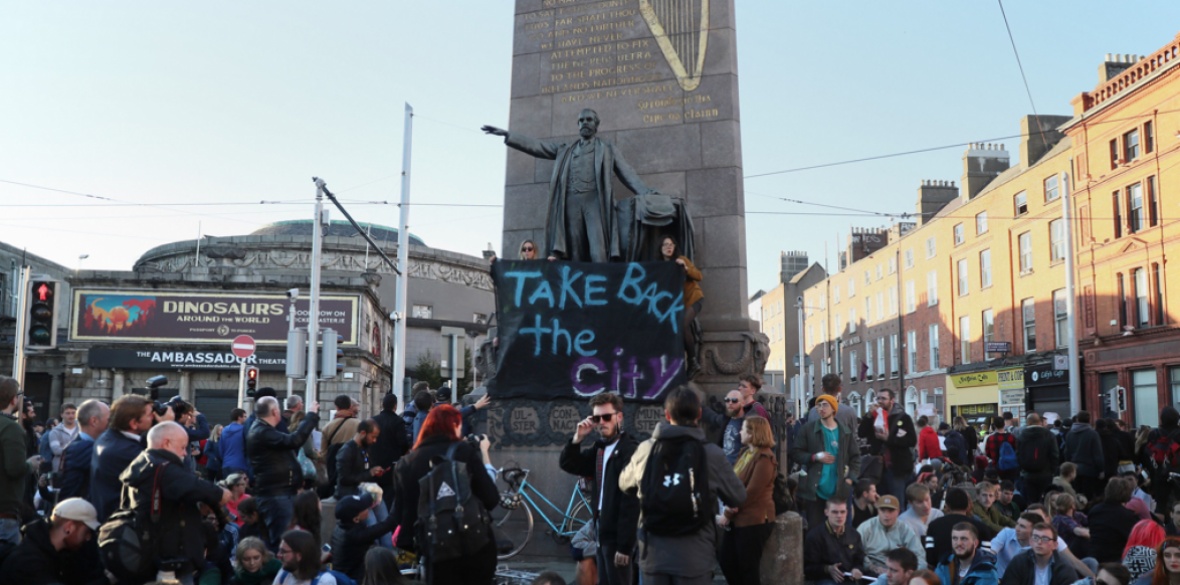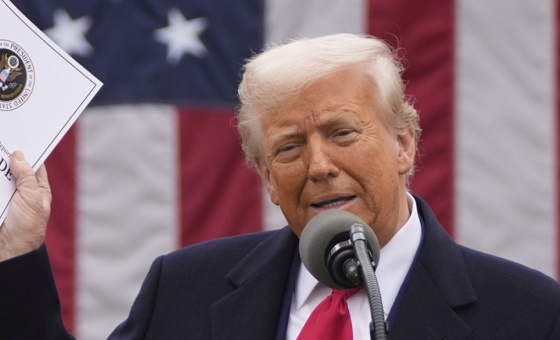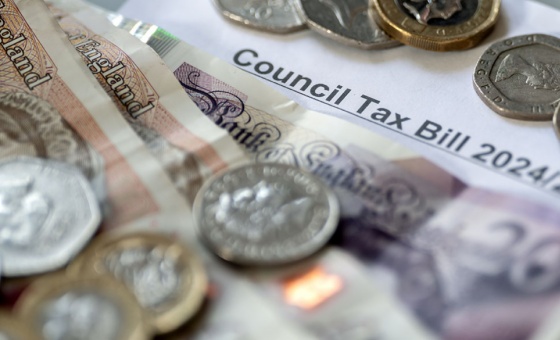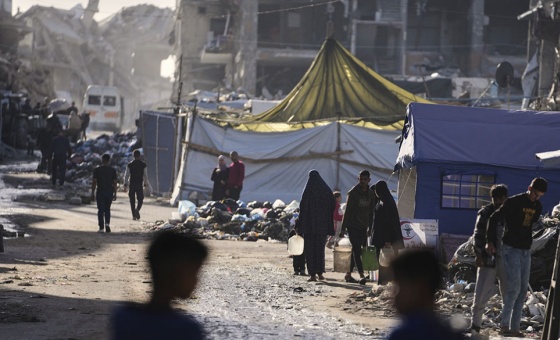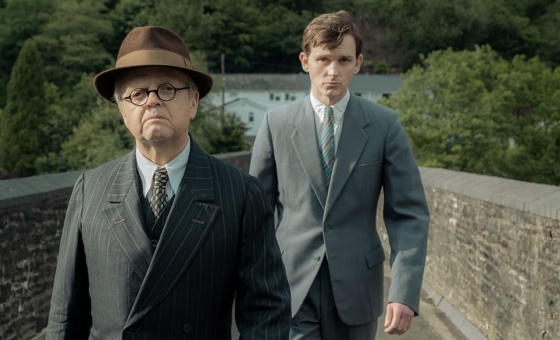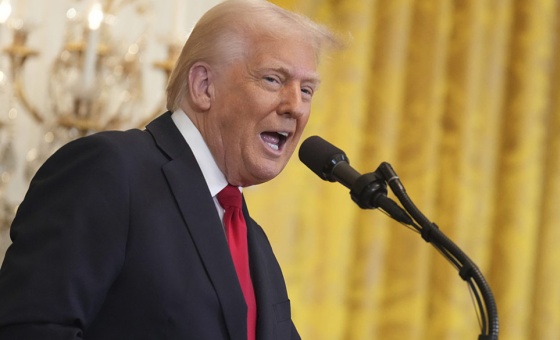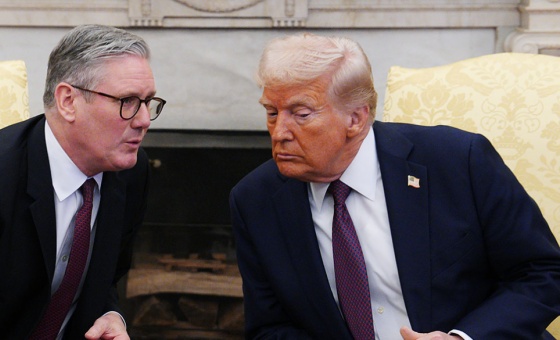This is the last article you can read this month
You can read more article this month
You can read more articles this month
Sorry your limit is up for this month
Reset on:
Please help support the Morning Star by subscribing here
THE last Irish general election upended decades of political orthodoxy.
The country’s largest parties, Fine Gael and Fianna Fail, had passed power back and forth since Eamon de Valera took office in 1932.
Their shared commitment to free-market dogma and IMF-backed austerity made this process especially seamless in recent years, as did their comparable reputations for cronyism and parochialism.
When one party was voted out, it could rely on the other to push an identical legislative agenda until its poll ratings recovered. The redundant historical division between FF and FG (over the Anglo-Irish Treaty) thus became an effective instrument to sustain contemporary neoliberalism, since these groups could collaborate on Thatcherite policies while distributing the blame for their social impact.
In this context, the event of a hung parliament in 2016, which deprived both parties of the requisite seats to govern, forced the Irish establishment to recalibrate: should FF and FG formalise their de facto alliance? Should they drop the partisan charade and unite against the insurgent left? Or would such unity terminate the comfortable arrangement in which these parties could pursue the same ideological project without being viewed as the same political entity? The fragile solution they came up with was a confidence-and-supply agreement in which FF would prop up FG without entering a formal coalition. The groups would edge towards an acknowledgement of their political parity, yet stop short of a merger.
It’s easy to see why the ruling parties wanted to maintain a degree of distance from each other. By forming a coalition, they would compromise the notion that governance is a purely technocratic or administrative affair (in which the population decides which administrators, FG or FF, are most appropriate), and re-inject principled political division into public debate. Instead of casting elections as a choice between administrators, such an alliance would pit the administrative ideology of FG-FF against the more inspiring and progressive vision of the Irish left.
It is this aspect of the 2016 result which provides an unprecedented political opening. The cosiness of FG and FF, expressed through the confidence-and-supply deal, gives their parliamentary opponents the chance to present themselves as a serious alternative – whereas previously the alternative to FG was always FF and vice versa.
The organisation best positioned to adopt this role is Sinn Fein, the self-described “socialist republican party” led by Mary Lou McDonald, whose support rose to 23 per cent after it won 14 seats at the last election. Sinn Fein has received endorsements from Podemos and Syriza, railed against the effects of “Tory austerity,” promised “investment in schools, health, roads, water and flood relief works,” and offered solidarity to “real victims of the crisis, ground down by austerity, negative equity and a crippling housing shortage.” Its onetime leader Gerry Adams has often voiced his “desire to see capitalism abolished” and affirmed that under an SF administration “the resources of this Island…[will] be used for the benefit of the majority of our people rather than for the enrichment of an elite and wealthy capitalist minority.”
The acceptance of such rhetoric in a country famously suspicious of social change is encouraging. But a closer look at Sinn Fein’s record creates the frustrating impression that it is not mounting a serious opposition so much as striving towards the “serious,” respectable status of the FG-FF technocrats. Instead of using the election result to invigorate a confrontational form of class politics, MacDonald has paradoxically committed herself to the toothless and conservative political culture whose decline is signalled by her popularity.
To illustrate this point, it is unnecessary to speculate on whether a future Sinn Fein government would break with the larger parties’ programme.
For one thing, a Sinn Fein government is not a hypothetical prospect but a historical reality in Northern Ireland, where it ruled alongside the Democratic Unionist Party until the collapse of the Stormont Executive last year. Although a generous commentator might read certain Sinn Fein policies, such as the axing of 20,000 public-sector jobs in 2016, as unavoidable concessions to the unionist right, there are several reactionary measures for which this excuse does not check out: for example, the party’s zealous support for New Labour’s Private Finance Initiative, its plan to slash corporation tax (drawn up before similar proposals from the DUP and Tories), its brutal cuts to education funding and its steps towards privatising Northern Ireland’s water and transport services.
On top of this, Sinn Fein ministers unanimously approved a series of workfare schemes and property tax hikes in Stormont, despite the party’s avowed opposition to such measures in the republic – a contradiction which forces us to ask whether the latter position is anything more than cynical manoeuvring (and, if so, whether all of Sinn Fein’s anti-austerity policies fit this description).
But even when we focus exclusively on Sinn Fein’s Dublin outfit, the party’s willingness to challenge the FG-FF consensus seems questionable.
That challenge has been in full swing for the Irish working class since 2014, when a mass boycott and direct-action campaign was launched against the government’s introduction of domestic water charges.
Trotskyist parties such as Solidarity and People Before Profit facilitated bottom-up resistance to the tax, helped communities to prevent the installation of water meters and encouraged strategic acts of civil disobedience. The Communist Party of Ireland helped build the mass Right2Water campaign seeking to enshrine public water ownership in the constitution.
The result was an astounding defeat for then Taoiseach Enda Kenny: three quarters of water bills went unpaid, forcing FG to abandon the scheme. Ireland’s water utility owes its nationalisation to this coordinated action on the part of community organisers and left activists.
Yet, through all of this, SF leaders refused to support the boycott movement and publicly stated that they would pay the charges. Adams’s alternative to the FF-FG policy was an “equity investment” plan which, far from advocating continued public ownership of Ireland’s water resources, would see them sold off to foreign multinationals.
The public-sector workers lucky enough to retain their jobs after this sale would have their pay “capped at realistic levels,” according to the Sinn Fein website – a brazenly pro-business programme which put Sinn Fein to the right of FF, who ultimately called for the charges to be scrapped.
While Adams liked to boast that he was “the only party leader who has been shot,” his reluctance to back the boycott movement reflects Sinn Fein’s wish to escape its Troubles-era reputation and appeal to a middle-class southern demographic who bristle at any mention of the IRA.
To endorse the clashes between inner city Dubliners and police officers which animated the anti-water charges campaign is to evoke the violent lineage which, Sinn Fein fears, will make it unelectable.
It is therefore ready to squander its historic opportunity to become Ireland’s “third party” and instead become the third faction of its dominant neoliberal bloc – hence Adams’s statement in 2017 that he is ready to enter a coalition with FG or FF.
Now, as Ireland’s housing crisis sparks a new wave of activism, with vacant properties being occupied by anti-homelessness campaigners nationwide, it remains to be seen whether Sinn Fein will throw its weight behind the protests.
It has tentatively supported those calling for idle houses to be bought by local councils and demanded that the government rein in the activities of vulture funds.
But as the latest anti-austerity movement gains momentum – threatening direct action against commercial properties and short-term lets – Sinn Fein will have to make a choice: complete its assimilation into the political establishment, or catalyse Ireland’s transition towards a new kind of politics in which FG and FF are seen as a united front to be opposed through grassroots mobilisation as well as electioneering.
Sinn Fein has the profile and resources to do the latter, but its recent history suggests that it will do the former. In which case the space remains open for other groups to forge a compelling and principled left platform.
Oliver Eagleton is a journalist living in London.
